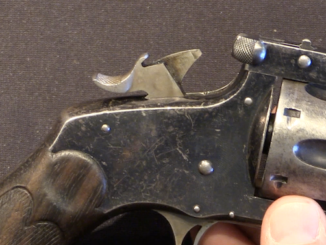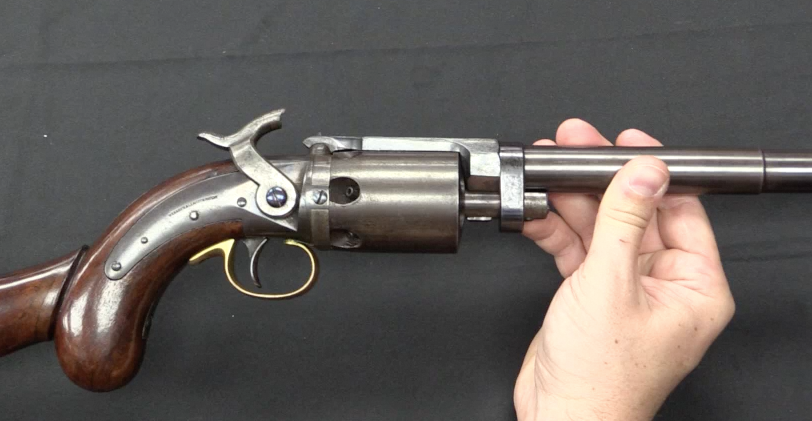In the buildup to the US War of Independence, “Committees of Safety” were organized in the colonial state to form shadow governments for the independence movement. These committees (our councils, as a few were named) had, among other tasks, the responsibility of sourcing arms for the local militia forces. This was done both by purchasing arms available at the time from gunsmiths, commercial dealers, and private individuals and also by contracting with gunsmiths to manufacture guns specifically for the council or committee. Typically these guns were not specially marked – there was no particular reason to do so – and as a result they are very difficult to authenticate today. A Revolutionary War weapon could have been anything available at the time.
One notable exception is an order placed by the Maryland Council of Safety. They ordered quite a lot of guns from area manufacturers, including a batch of 500 pistols. In addition, they hired an inspector to verify the quality of the finished guns, and mark them. The inspector was named Thomas Ewing, and his marking looked rather like a tulip. Records about the guns he oversaw and marked remain in existence, and allow them to be identified – including this one, a single-shot flintlock pistol with Ewing’s mark.




Living on the southwest side of Baltimore, this it particularly interesting to me! As you might know, MD was really the first Southern state captured in the war of Northern aggression. Baltimore was very Southern and controlled Maryland. The Baltimore Riots of 1861 was only a few days after Sumter and were citizens tried to stop Union Troops moving through Baltimore. We still have Federal Hill, the place where the Union camped during the war to keep Baltimore under threat if the state tried to leave the Union. They also locked up many of the leaders in Maryland to make sure the South could not leave the union leaving DC surrounded by the Confederacy. Its a great piece of history there. I wish I had a spare $55K to buy it! I am only about $54.5K short.
as a Canadian reader I feel I should point out, you didn’t drive the British out of North America, you drove them out of Thirteen of the fifteen colonies on North America. you tried to drive them out of upper and lower Canada as well, that didn’t go as you hoped.
cheers
It’s amazing that such a rare piece of history has survived in such remarkable condition for nearly 240 years. Great find. It is, in form, remarkably similar to the more common British service pistols of the era, so one should always be aware of the potential for fakery with these items. I am not criticizing this particular piece, because I am sure that RIA has done their homework, but, there are a number of fake American martial flintlocks in circulation, with the North and Cheney pistols converted from common French Model 1777 pistols being turned out by what was almost a cottage industry in the late 19th and early 20th century, sort of like Wyndom-Matson in Philip K Dick’s “The Man in the High Castle”. With 50+ years of patina and provenance, many of these have assumed the mantle of “authentic.” As always, “caveat emptor.”
Yes, caveat emptor indeed for guns claiming this sort of provenance. If I had found any evidence that made me question its authenticity I would not have done the video, but I’m certainly not an expert on authenticating this type of thing.
Ian,
I obviously trust your objectivity, and also trust RIA as vetting this pistol as thoroughly as possible. Quite frankly, this is something I would love to have and would feel confident that it is what it is purported to be. Still, early American firearms with Revolutionary provenance have been a ripe field for fakery due to the rarity of both guns and records, as well as the associated value. The real problem with these types of fakes is threefold:
First, these pistols were handmade, and thus variations in uniformity within the same model can easily be explained away.
Second, many of these fakes were minor alterations of already antique arms, so the materials, patinas and wear marks show genuine age.
Third, many of these fakes were created nearly a century ago by master craftsmen, and the presence of these arms in long-established collections gives them additional provenance.
Also, there is the collectors’ desire for these things to be real. I love the thought that something of such historical significance to our nation has survived intact, and I know that I would be absolutely giddy at just being able to handle such a piece. But I, and people far more knowledgeable than me have been burned by such things, so it pays to be careful.
That being said, I would bet a five-figured sum that this is the genuine article, due to the reputation of the seller.